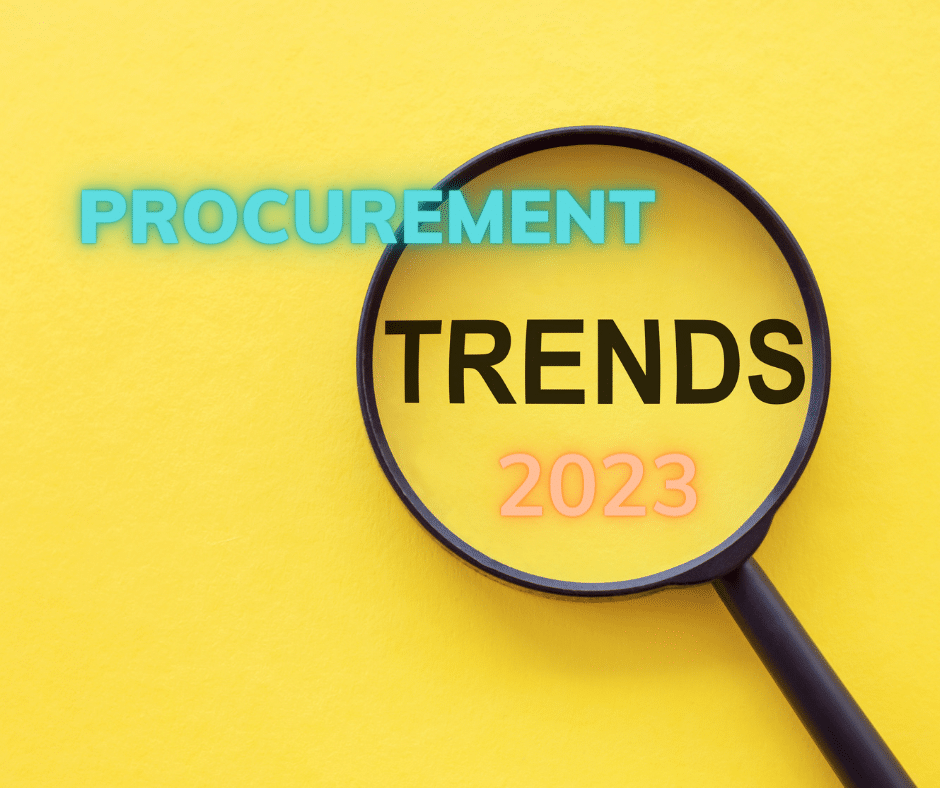
2023 is set to be an interesting year in procurement as trends shift to address the disruption of recent years.
Get ready for these 7 procurement trends to impact your strategy in 2023 and beyond.
1 Procurement’s operational revolution
Two-thirds of CPOs surveyed in the 2022 Procurement Leaders CPO Compass said they expect supply chain volatility to persist. So for organisations to survive and stay competitive, procurement must become more agile, connected, nimble and collaborative in 2023.
For some, this means automating processes to save time, free up skilled resources, and reduce the risk of mistakes. Others will put a focus on supplier collaboration.
2 Supply chain tier mapping
Supply chain tier-mapping and transparency has been a top concern in the past year, and will no longer be a ‘nice-to-have’ in 2021.
As supply chain complexity grows, so too do the tiers of supply networks, and it is becoming increasingly important for organisations to have visibility of their supplier network beyond tier one.
That’s the only way organisations can react quicker in response to the disruptions (like a pandemic), better allocate resources, and foresee issues in the other tiers of their supply chains.
3 Prioritise responsible spending
Procurement is increasingly being recognised as the function that can make an impact on organisational goals, such as sustainability, diversity and inclusion.
In the 2022 CPO Compass survey by Procurement Leaders, almost four-fifths (79%) of procurement officers say they will seek to improve supplier diversity and inclusion by tracking their expenditure with Tier-2 diverse suppliers in 2022. What’s more, 62% plan to revise supplier selection criteria to enable more diverse enterprises to win business.
In Australia, there’s even a “Supplier Diversity September”, a month-long initiative held annually by Supply Nation to promote the benefits of supplier diversity and to showcase the range of Aboriginal and Torres Strait Islander businesses across Australia.
It’s not only diverse suppliers that procurement will increasingly focus on in 2023. Sustainability has never been more important. Research by the Hackett Group shows supporting corporate sustainability goals is a top agenda item for procurement – by 2023, 92% of enterprises expect to have sustainable procurement programs in the areas of economic development, social well-being, and environmental protection.
4 Procurement talent in demand
Demand for talented procurement professionals will continue to outstrip supply.
Almost half (46%) of employers say that the Great Resignation will accelerate this financial year, according to the Hays Salary Guide FY 22/23. This is good news for procurement professionals who will have more power in salary negotiations. In fact, the Hays report shows 56% of employees will have more confidence to ask for a pay rise this year and 65% of employers have offered higher slides than planned.
The top five jobs that employers need to fill are:
- Contract administrators
- Procurement specialists
- Category managers
- Contract managers
- Procurement managers
This means it’s a great time to get into the profession, develop your skills and enjoy a rewarding career.
In this climate, employees are recognising the need to continuously learn. In the Hays Salary Guide, 60% say that learning or developing technical skills and 41% learning soft skills, is important to them in their career for the year ahead.
5 Spotlight on supplier relationships
The focus on supplier relationships is not new – at the start of 2022, more than 66% of CPOs were prioritising supplier collaboration and other broader value-generating activities. We can expect this to intensify in 2023 as procurement professionals look at how they can build strategic, dynamic relationships with suppliers.
For some this will mean investing in procurement technology. Some 57% of procurement officers say they plan to invest in supplier performance management solutions this year.
6 Focus on total cost of ownership
Australia’s inflation is set to peak at an annual rate of 7.75% by the December quarter of 2022. But the damage will already be done for businesses. The challenge of high inflation, in addition to the war on talent and supply shortages, means the cost of business is going to continue to rise in 2023.
In response, procurement professionals will source with a total cost of ownership mindset. Rather than focusing on the initial cost to purchase, it will be the ongoing support and operation that influences purchase decisions.
7 AI and data analytics to bring business value
The sophisticated, AI-powered technology that now exists can help procurement functions drive fair, competitive, and sustainable self-serve sourcing in 2023.
How? By helping illuminate the insights hidden in data.
More organisations will be investing in existing AI and machine learning technology that allows them to collect and analyse valuable real-time data to make informed decisions, identify opportunities, and address challenges before they become risks.
For example, with machine learning, humans can train algorithms to detect patterns in spend, which remove dull work of repetitive new spend classification, and algorithms can be programmed to automatically detect new and interesting patterns in supplier relationships – all of which can help procurement create far more impact on a company’s profitability.
These are just some of the trends that are set to shape procurement in 2023. But as the recent years have shown, you can’t predict everything! That’s why it’s important to stay up to date with the latest trends and shifts, and stay agile and flexible in your approach.
One way to achieve this is to keep yourself and your team on the leading edge with relevant training and development. Talk to Transformed to find out how we can help.





